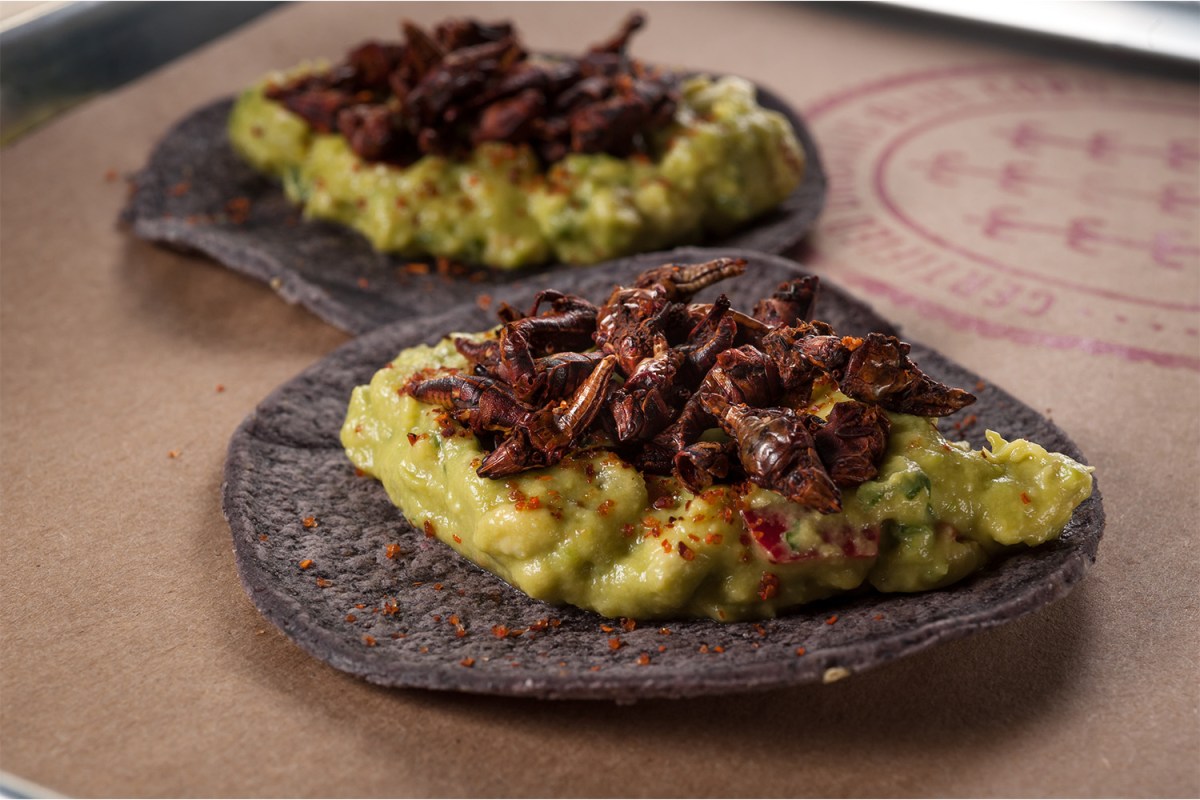In Mexico City, escamoles are a local delicacy: An ant larva found at the base of certain agave plants, they’re buttery and nutty in flavor, often categorized as “ant caviar.” And while they’ve been popular in Mexico since the Aztec era, they’re relative newcomers to Miami, where they’ve recently appeared on menus alongside grasshoppers, agave worms and more — to rave reviews.
While an estimated two billion people around the world “regularly and intentionally consume insects,” according to Dr. Gina Louise Hunter, PhD, author of Edible Insects: A Global History and associate professor of anthropology at Illinois State University, insect-based foods have only recently entered the mainstream culinary consciousness in the U.S. In a time when many are concerned with the climate impact of their protein sources, it’s unsurprising that folks would be curious about the sustainable and nutrient-dense critters. But Hunter draws a distinction between snack foods and protein powders that seek to hide the insects — usually cricket meal — at their core and these dishes that, on the contrary, celebrate their unique flavors and textures. The growing popularity of the latter, she contends, “lies at the confluence of several trends,” citing among them the increased interest in foraging, thanks in large part to Danish chef René Redzepi, as well as a refocusing of the American culinary narrative on indigenous cuisines — and the indigenous chefs and activists working to reclaim them.
Hunter notes that while insect consumption is common around the world, it was far more popular before colonization and the Western framing of the practice as an oddity in the first place.
“Through Western colonization, whole landscapes were altered and insect-eating was labeled ‘primitive,’” she explains. “But there are places where insects have remained vital to local cuisine, as in central and southern Mexico in the states of Oaxaca, Guerrero, Puebla, Campeche and Chiapas, where many insects are part of the local fare.”
Lalo Durazo is one professional pushing to bring these traditional insect-based dishes to Miamians’ plates. As the managing partner and CEO of Bakan, he has helped craft a special Los Exoticos menu, featuring chicatana ant salsa with chile and peanuts, crispy pan-fried agave worms with guacamole and blue corn tortillas, grasshopper tostadas and ant egg escamoles with butter and epazote, all sourced from small purveyors in Mexico.
“The concept of Bakan is deeply rooted in pre-Hispanic Mexico and its culture; therefore, in order to provide our guests with the most authentic experience, we must serve traditional dishes of the time, which include insects,” says Durazo. “Our goal is for each diner to be immersed in the decadent Aztec history through each bite, just like our ancestors.”
And while Bakan certainly stands out with these offerings, it’s not the only Miami restaurant where you’ll find them. At Mayami, shots are infused with scorpions, worms or crickets; chef Steve Santana of Taquiza proudly sources the grasshoppers for his adobo-seasoned chapulines taco from Merci Mercado, a sustainable purveyor of not just grasshoppers but maguey and mezcal worms.
Unlike the offerings at Bakan, Taquiza’s grasshopper tacos are not set apart on their own “exotic” list. Rather, they feature on the main menu, slipped in between huitlacoche corn truffle and grilled shrimp.
“Since Taquiza’s concept is traditional Mexican street fare, we wanted to be as authentic as possible when it came to the menu,” Santana says. “You can’t get more authentic and traditional than chapulines.”
For Durazo, Miami is the perfect place to offer these options, with over half of guests at Bakan inquiring about or indulging in the Los Exoticos menu.
“For those who take the chance and order one of these dishes, it is an exciting and delicious experience that usually involves lots of photos,” he says.
Santana, too, has found local reactions “surprisingly good.”
“You have those who are familiar with traditional Mexican food who are excited to find chapulines tacos in Miami; you have those who are curious and eager to try such a rare ingredient,” he explains. “And you, of course, have those who position trying the taco as more of a ‘dare.’”
And while Santana notes that insects aren’t necessarily his favorite food — “I don’t mind them, but you won’t find me snacking on them in my free time” — Durazo notes that he grew up enjoying insects in his native Mexico. His personal favorite? The buttery escamoles. “The crunchy texture and the delicious flavors create the most amazing dish,” he says. “Escamoles are typically found in Mexico City, so it’s very cool to be able to enjoy it in the heart of Miami.”
This article appeared in an InsideHook newsletter. Sign up for free to get more on travel, wellness, style, drinking, and culture.
























